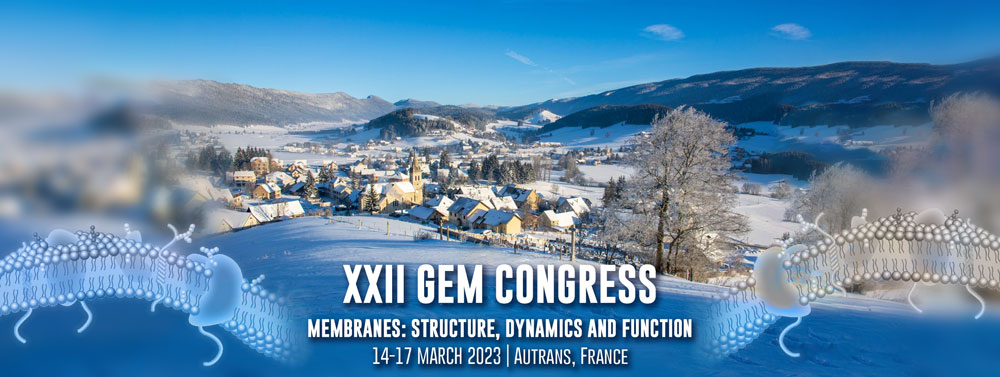Speaker
Description
Tolerance to the most extreme environmental conditions is almost always observed in the phylum Archaea. The synthesis of membrane-spanning, bipolar lipids has been linked to thermal and low pH tolerance: monolayers are more rigid and thermally more resistant than lipid bilayers. However, the requirement for bipolar lipids has been recently challenged by the existence of hyperthermophilic Archaea unable to synthesize bipolar lipids while growing optimally around the boiling point of water. This is for example the case of Pyrococcus kukulkanii, which grows optimally at 105°C or Methanopyrus kandleri which can grow up to 122°C. Thus, how these lipid bilayers can be stable at or above 100°C remains to be determined. Recent works have shown the role of unusual membrane lipids, apolar polyisoprenoids which insertion into the midplane of a lipid bilayer can shift the stability domain of the membrane to higher limits (M. Salvador-Castell 2021). This work also highlighted the potentially crucial role played by the polar headgroups of the membrane lipids on membrane properties. Moreover, recent studies of the lipidome of two polyextremophilic model archaea Pyrococcus furiosus (P. furiosus) and Thermococcus barophilus (T. barophilus) have demonstrated that they produce more than eighty different lipid molecules, harboring ten different polar headgroups (M. Tourte 2021 and 2022). The aim of the current work is to understand the synthesis and contribution of different types of polar lipids on the properties of the archaeal membrane.
To address this question, targeted knock-out mutations in specific genes of P. furiosus has been created in all putative genes that may be involved in the biosynthetic pathway of diether and tetraether lipids. Each mutant has been characterized at different levels: growth cycle and response to environmental stress (pH, temperature and salinity), and monitored via several parameters including cell morphology (Scanning Electron Microscopy) and cell division. The lipid composition of each mutant has been obtained by intact polar lipid extraction, core lipid extraction and basic hydrolysis, followed by HPLC-MS-MS analysis.
With this technique 21 mutants of P. furiosus have been constructed and characterized. One of them targeting the gene PF1454 homologous of the tetraether synthase described by Zeng et al (2022), confirms the lack of tetraether synthesis in this mutant. Surprisingly, the mutant remains capable of growth at 98 °C. This result clearly proves that the monolayer membrane is not required or mandatory for survival at high temperature. Further characterization are ongoing for a better understanding of membrane bilayer stability.
| Session | Structural biology |
|---|

